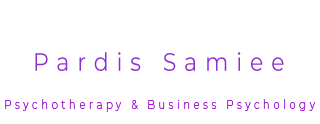Now, scientists can easily calculate the cost of unhappiness and the value of happiness for organisations. Recent studies, done by iOpener Institute, showed the average productivity of an ‘unhappy employees’ is only two days a week! Studies like this encouraged leaders to incorporate happiness into their employees’ professional life. It sounded so simple at the beginning, but over time it became apparent to everyone that achieving happiness is not that simple.
To understand happiness, first we must understand what triggers it. We must look through the ingredients that are needed to build it. After all, it is not as easy as making soup with basic ingredients. Certainly, it requires the right amount of everything on the right time such as:
– 1 cup of Positive Mood
– ½ Negative Mood
– ½ cup of Life Satisfaction
To feel happy at any present moment, at least one of the components must be active.
The presence of positive moods
This includes joy, gratitude, interest, love, admiration, pride… Moods are frames of mind with a global effect on our thoughts, behaviour and feelings. We can easily influence our mood as there are many techniques developed by psychologists. I will share these with you in future posts.
The absence of negative moods
This includes anger, guilt, anxiety, shame and sadness. For many, it was revolutionary to understand that you can just ‘be’ without having a bad mood or a good mood. Just being at present moment with a neutral mood could be as pleasant as experiencing joy or love. Mindfulness technique is one way to achieve this state of mind.
Life satisfaction
This one is a bit more complex than the other two! It has its own pillars and could be subjective. One of the simple explanations by Ruut Beenhovens a satisfaction scholar is: ‘Life satisfaction is the degree to which a person positively evaluates the overall quality of his/her life as a whole. In other words, how much the person likes the life he/she leads. We will explain it in more detail in our future posts.
The components explain when (and why) we feel happy. Understanding them, helped psychologists and neuroscientists to show us ways to retain or attain happiness. But this is not enough. To understand happiness, we need to also learn about the two main types:
The happiness we find in pleasure, and the one we find in engagement or meaning.
Happiness in Pleasure
Aristippus, a Greek philosopher from the fourth century B.C. believed that the goal of life is to experience the maximum amount of pleasure. It surely helps with the ‘presence of positive mood’ and ‘the absence of negative mood’. There are techniques and shortcuts to increase the duration or intensity of your pleasure. Money, TV, alcohol and drugs are examples of things which gives us tangible pleasure.
‘Happiness in pleasure’ can be bought. Buying clothes gives me joy… but how long that joy stays with me is another story. Duration of good moods, the absence of bad moods and dealing with consequences are all factors which challenge these pleasured life fans!
Happiness in meaning and engagement
In ancient myths and legends, humans had lost their lives in the pursuit of a meaningful life. You might find the concept of a ‘Meaningful life’ scary, unobtainable or subjective. Don’t worry!
For many of us, the word meaning is associated with ‘too much work’. The definition of a meaningful life is knowing what your highest strengths and talents are and utilising them in the service of your values! I know some of you might think I don’t know my strength and talents and even my values. Don’t worry, you are not alone.
Although finding our strengths and talents, and subsequently, crafting our life by them is important – to reach fulfilment, your social life plays a significant role. Relationships are the core of subjective well-being. We were created by a relationship of two human beings, raised, developed and injured in relationships. The only way to cure and thrive is by forming fully engaged relationships with others. How you connect with people can change your happiness levels substantially. That’s what psychologists call an ‘engaged life’. It’s where you can experience the optimal level of connection.
Meaning and engagement are the foundations of lasting happiness. The good news is they are very achievable. The bad news is we need to learn and practice if we truly want it!
In my next post, I will look at the first two components of happiness (moods). We will talk about what mood is, how to create a good mood or diminish bad mood.




